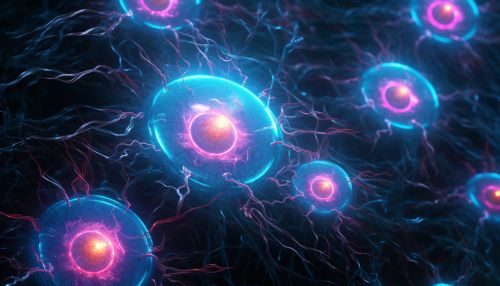Cell Division
Introduction
Cell division is a fundamental process in biology that leads to the replication of cells. It is the mechanism by which living organisms propagate, grow, and repair damage. This process involves the distribution of identical genetic material, DNA, to two daughter cells. It is a complex process that requires the coordination of numerous cellular components.
Types of Cell Division
There are two major types of cell division: mitosis and meiosis. These two processes are similar but have significant differences that result in different outcomes.
Mitosis
Mitosis is a type of cell division that results in two daughter cells each having the same number and kind of chromosomes as the parent nucleus, typical of ordinary tissue growth. It is a single nuclear division that results in two nuclei that are genetically identical.


Meiosis
Meiosis, on the other hand, is a special type of cell division of germ cells in sexually-reproducing organisms used to produce the gametes, such as sperm or egg cells. It involves two rounds of division that ultimately result in four cells, each with half the number of chromosomes as the parent.
Phases of Cell Division
Cell division is not an instantaneous event but a series of well-defined phases. These phases are collectively known as the cell cycle.
Interphase
Interphase is the period of the cell cycle during which the cell is not dividing. The majority of cells in the human body are in interphase most of the time. During interphase, the cell grows and DNA is replicated in preparation for mitosis.
Prophase
Prophase is the first stage of mitosis, during which the chromatin condenses into a highly ordered structure called a chromosome.
Metaphase
During metaphase, the cell's chromosomes align themselves in the middle of the cell through a type of cellular "tug of war."
Anaphase
Anaphase is the stage of mitosis during which the chromosomes are segregated to opposite poles of the cell.
Telophase and Cytokinesis
In telophase, the segregated chromosomes uncoil to form chromatin, and two nuclear envelopes form around each set of unduplicated chromosomes. Cytokinesis is the physical process of cell division, which divides the cytoplasm of a parental cell into two daughter cells.
Regulation of Cell Division
Cell division is a tightly regulated process. The cell cycle is controlled by a complex series of signaling pathways by which a cell grows, replicates its DNA and divides. This process also includes mechanisms to ensure errors are corrected, and if not, the cell is directed to undergo programmed cell death (apoptosis).
Significance of Cell Division
Cell division is of critical importance to life. It is the process by which organisms grow and reproduce, and it also serves to replace cells that have died or been lost.
Abnormal Cell Division
Abnormal cell division can lead to diseases such as cancer, where cells divide and grow in an uncontrolled manner. Understanding the processes of cell division and its regulation provides insights into the pathogenesis of cancer and other diseases, and may lead to the development of novel therapeutic strategies.
